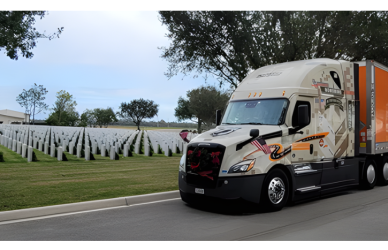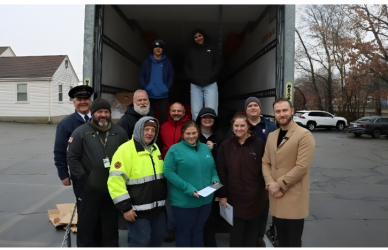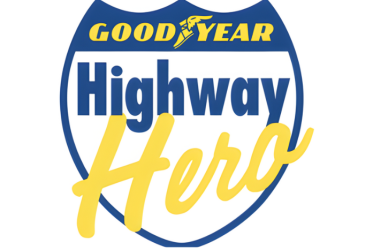For truck drivers, life on the road is more than just a job—it’s a lifestyle filled with endless miles and unique adventures. Amidst grueling schedules and highways that seem to stretch forever, taking time to admire stunning landscapes can offer a refreshing mental escape. While some national parks restrict access to commercial vehicles, there are plenty of scenic routes thoughtfully designed to be truck-friendly. These picturesque drives provide mesmerizing views and a smoother travel experience, making them perfect for unwinding while staying compliant with road rules.
Navigating Access Restrictions for Trucks in National Parks
Not all roads are created equal when it comes to truck access. Many national parks, though inviting, have restrictions in place to preserve the environment or limit heavy traffic. For example, trucks are prohibited on certain key roads, such as Newfound Gap Road in Great Smoky Mountains National Park, unless engaged in local delivery tasks. Noncompliance with these rules could lead to fines, so it’s crucial to check each park’s specific regulations beforehand. Visit the National Park Service website to understand the access rules, ensuring your plans align with each location’s do’s and don’ts.
Despite these restrictions, the good news is that dozens of breathtaking scenic roads are accessible to trucking vehicles. By taking the time to research and plan your route, you can combine your work schedule with memorable sightseeing experiences. Below, we’ve rounded up some must-see scenic routes that cater to trucks.
4 Stunning Scenic Routes for Truck Drivers
- Blue Ridge Parkway (Virginia and North Carolina)
Famous for its winding roads and awe-inspiring views of the Appalachian Mountains, the 469-mile Blue Ridge Parkway is a dream for any traveler looking to soak in panoramic vistas. While some sections have height and weight restrictions due to tunnels and steep inclines, many portions are accessible for large vehicles. Before venturing into this iconic route, consult the official Blue Ridge Parkway website to review restrictions and plan your safe passage.
- Pacific Coast Highway (California)
California’s iconic State Route 1, better known as the Pacific Coast Highway, delivers dramatic cliffside views, waves crashing along the coast, and vibrant sunsets like no other route. Trucks can safely travel select portions of this highway near major hubs such as Los Angeles and San Francisco. That said, certain segments with narrow and winding roads may not be suitable for larger trucks. Be sure to use California’s Department of Transportation resources to get updates on restrictions and road advisories before hitting the road.
- Natchez Trace Parkway (Tennessee to Mississippi)
This historic 444-mile route winds through three states, offering drivers a serene blend of untouched landscapes and historical markers. Although commercial vehicles are often restricted, smaller Class B vehicles may be allowed under specific circumstances. Always confirm your access through the National Park Service’s Natchez Trace Parkway resources before planning your visit. The beauty of this drive will undoubtedly leave a lasting impression, whether it’s the lush greenery or its deep historical charm.
- Kancamagus Highway (New Hampshire)
Known locally as “The Kanc,” this 34.5-mile stretch runs through New Hampshire’s White Mountains and is particularly famous for its breathtaking fall foliage. Trucks are welcome on this route, but drivers should prepare for steep grades and fewer rest stops. You can find detailed maps and planning resources through the New Hampshire Department of Transportation to help make the most of this scenic tour.
Tips for Planning Your Scenic Drive
Before embarking on an adventure along one of these stunning routes, a little preparation goes a long way. Here are essential planning tips to ensure a safe and enjoyable trek:
- Review State and Highway Regulations: Each state and highway has its own commercial vehicle restrictions. Plan accordingly to avoid penalties.
- Plan Your Stops: Strategically locate truck-friendly rest areas, gas stations, and parking zones using apps like Trucker Path or AllStays.
- Monitor Conditions: Always stay updated on weather forecasts and potential road closures, especially in areas prone to sudden changes like mountains or coastal areas.
- Carry Essentials: Stock up on snacks, water, GPS tools, and freight gear to manage delays or unexpected situations.
The demands of long-haul driving can be both mentally and physically taxing. Incorporating scenic routes into your journeys doesn’t just break the monotony of endless asphalt; it offers an opportunity to appreciate the beauty of nature, reset your mind, and decompress from the hustle. Whether it’s the misty mountain roads of the Blue Ridge Parkway or the crashing coastal waves along California’s Pacific Coast Highway, these moments of natural wonder serve as a reminder of why the open road is so special.
America’s roads are much more than functional routes connecting cities—they’re gateways to some of the most spectacular landscapes on Earth. Planning your routes carefully and complying with park and highway regulations can seamlessly balance your professional demands with personal exploration.
The next time you plan your haul, why not pencil in a scenic detour on your route? Often, the best part of the drive isn’t the destination—it’s the unforgettable views along the way.











